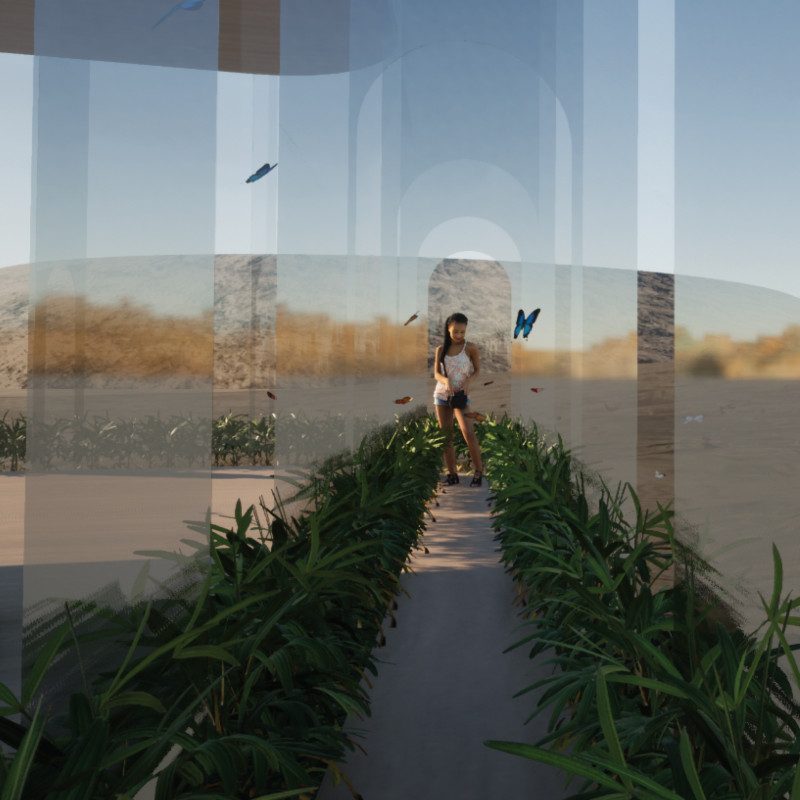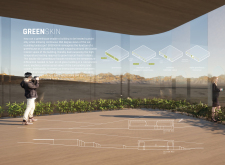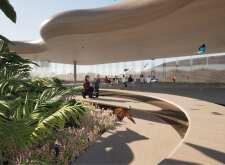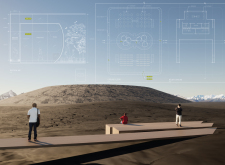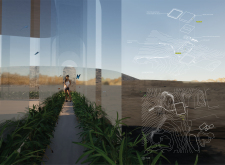5 key facts about this project
Unique Design Features
One of the most distinguishable characteristics of the GREEN SKIN project is its use of a double skin facade. This innovative approach not only allows for an abundance of natural light but also promotes thermal efficiency by reducing energy consumption for heating. The transparency of the structure maximizes views of the surrounding landscape while bringing the outdoor environment into the interior spaces, encouraging a seamless transition between outside and inside.
Moreover, the incorporation of various biophilic elements sets this project apart. The plant-filled spaces not only improve air quality but also create a living environment that evolves with the seasons. This interactivity extends beyond passive observation; users can engage directly with the lush plant life, cultivating a deeper understanding of sustainable agricultural practices. Educational workshops and experiential learning are facilitated within the structured zones of the greenhouse.
Integrated Community Spaces
The design organizes spaces to promote user interaction and community engagement effectively. Multiple function areas such as communal dining spots, workshops, and event spaces are strategically placed to encourage socialization and collaboration among users. The layout is conducive to hosting various activities, from educational programs about sustainable practices to community gatherings centered around food production.
The project further supports biodiversity through its architectural decisions, promoting the growth of a diverse range of plant species that can coexist within the greenhouse. This aspect not only supports ecological stability but also educates users about the importance of biodiversity in our food systems.
The choice of materials enhances the project’s sustainable approach. Structural glass, engineered wood, soil, and aggregate are all selected to meet environmental standards while ensuring longevity and minimal maintenance. Each element contributes to the overall efficiency of the building, reinforcing the relationship between architecture and ecology.
For a comprehensive understanding of the design, including architectural plans, sections, and unique architectural ideas, readers are encouraged to explore the project presentation. This exploration will provide deeper insights into the architectural decisions and the innovative solutions that define this significant contribution to sustainable architecture.


